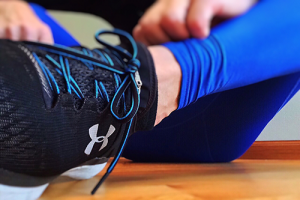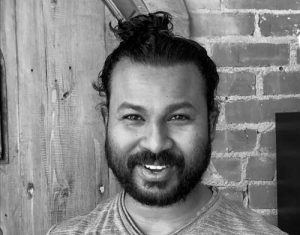 Personal Trainer Rob Stephenson shares his insights on how we can fight aging (or give it a good try)!
Personal Trainer Rob Stephenson shares his insights on how we can fight aging (or give it a good try)!
What Are The Best Exercises as you Age?
Your Anti-Gravity Subsystem. There’s no stopping it, time is coming for you, and each one of us. The only chance we have to beat it is to improve our biomechanics and understand how to rebuild the spring system in ourselves. The spring system is the pliability system, or the tension-release system we all have in our bodies. It starts with having a strong and functional core, and ends with understanding how to transmit energy throughout the core to the legs, glutes, hips, and arms. A lot of you may know this as core-to-extremity movement, but I think it is worth noting that there are a lot of steps to understanding how to elicit this response.
Humans evolved into bipeds because of their antigravity system; a muscle subsystem within the human body’s framework that led them to stand upright and walk on two legs. It is, essentially, a group of fascial units that work against vertical force-vectors (gravity) to keep us lifted out of the joints and upright. And in a world where exercise is a top priority for any city or suburbanite dwellers, we are constantly wondering whats the best exercise as I age?
HIIT (high-intensity interval training) gives you great results, but most folks don’t allocate enough time for their body to rest and recover during the sessions. Yoga can be nice and restorative, but doesn’t necessarily build strength the way lifting weights does. Olympic lifting builds neural-pathways that incorporate multi joint exercises that require flexibility as well as strength, but do they reinforce functional patterns that make sense for everyday humans? A lot of these solutions in the ‘fitness’ industry end up driving inefficient patterns deeper, thus creating more imbalances in the musculoskeletal system. For general health purposes we need to better address what we need to continue to excel in the realm of human bipedalism- that is, to move on two feet.
Our Ancestry Looked Different
Time is a constant that will work against us as we age, but the other constant is that longitudinal force called gravity. And since we live in this longitudinal vector of space it becomes important for us to understand how to build the muscle movements that work against gravity and lift us off of our joint systems instead of pulling us down into them. Things we know about the body as it ages: bones become brittle and lose density, stiffness develops throughout the body, and we shrink. Gravity literally pummels us to the ground and this is largely because of the exercises we aren’t doing enough of!
Look at our ancestors, they didn’t sit in chairs during work days, they didn’t have the luxury of slumping into a couch to watch television, they were regularly lifting things up and dealing with the physical demands of farming, manufacturing, or building day in and day out. Their stressors during the day were centralized around having to complete physical tasks (whether it was running from a lion, fetching water, or starting a fire to stay warm), and because of this their bodies overcame stress utilizing movement as the avenue, and their body as the tool. Our stressors in the modern world are on computer screens or cell phones, and exist within a sedentary lifestyle. So now when we are stress induced we do some mental work to figure it out (text, email, phone call), but we don’t have to use movement to release any of that anxiety that came in. However, the stress still has to go somewhere, so instead it gets held up or locked somewhere else in the body. We have evolved so far away from our antigravity subsystem and each day get further and further away from it. Example; if you sit all day, stress probably goes to your hip flexors and psoas, for others it might go to your upper back and neck. We all deal with stress somehow, and it always leads to a compensations somewhere in the fascial system.
Some Is Better Than None
Now having said this and comparing it to today’s average person’s day, any movement is better than no movement. We have enough evidence to know that getting out of your chair regularly benefits the knees and hips in comparison to not getting up at all. Doing some sort of fitness class or regular exercise dramatically improves blood circulation to the joints and muscles than none. A strength stimulus is also necessary to reduce the effects of aging, so if you’re using weights of some sort you’re onto the right idea. Do you need to do hundreds of reps of something to counter the effects of aging and gravity-muscle dominance? Not necessarily, just lift something a few times, for a few seconds everyday.
If you’re an athlete competing for a podium finish, your daily training might need to incorporate some more specific goals centralized around the response you’re trying to create. But at the end of the day, the average person needs to do 5 things to counter age and time: short intervals of aerobic exercise, train every joint every day, get out of your chair every 30 minutes, lift something heavy everyday, and keep your sex life active (this is great exercise).
I’ve put together some of my favorite exercises that contribute to developing your anti-gravity muscle systems.
- Horse pose, each day, for :45-90 seconds
- Forearm plank, knees up or down, for 1-2 minutes per day
- Lunges, constantly vary the kind, 8-12 per side each day (as seen above)
- Single arm cable row, stand, neutralize your head, spine, and hips, 10 per side
- Superhero hold, 1 minute per day
- Unilateral bridge, static hold for :20-:40 seconds per day.
Doing these exercises will strengthen everything from your TVA to your quads and glutes, to your obliques, and serratus muscles. And what’s great is that none of these exercises will cause an inflammatory response on your joint system either. It’s crucial that as we continue to age we develop the mind of understanding our anti-gravity system and how to make it more elastic so that we don’t turn into one of these people being weighed down by our own bodies. Just reach out if you need help putting together a training regimen that does this.
Rob is available for personal training sessions at Om Namo Center. Book here. You can find more of his insights on www.trainrugged.com.



